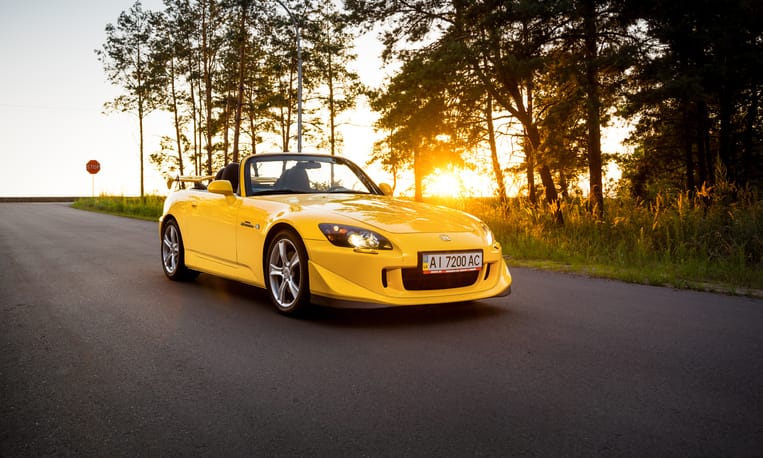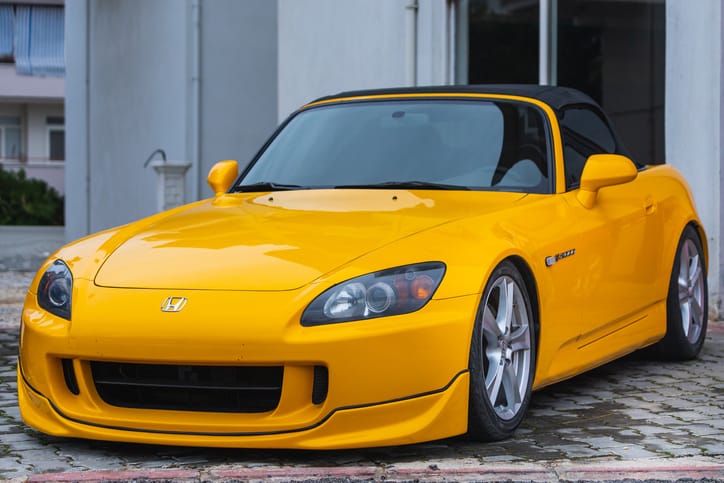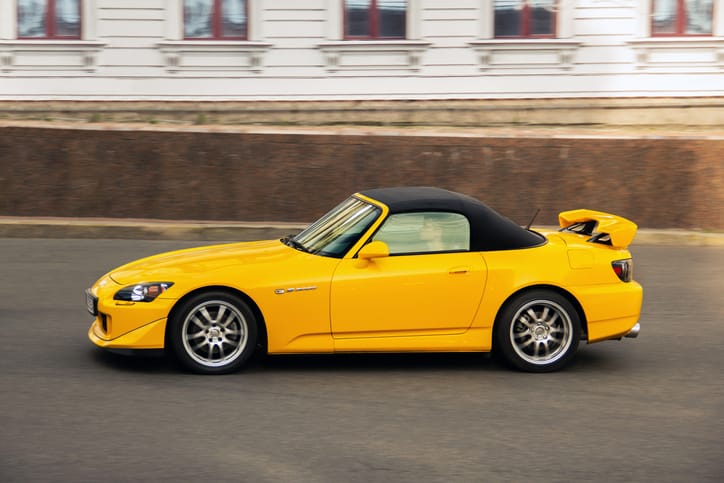The Open Road: The Enduring Legacy of the Honda S2000

Few cars capture the spirit of pure, unadulterated driving joy like the Honda S2000. A two-seater, rear-wheel-drive roadster produced from 1999 to 2009, the S2000 was a love letter to the golden age of open-top sports cars, offering exhilarating performance, razor-sharp handling, and a connection to the road rarely experienced in modern vehicles.
A Dream Rekindled:
The S2000's conception stemmed from a desire to revive Honda's rich sports car heritage, harking back to legendary models like the S500 and S800. Unveiled in 1998 at the Tokyo Motor Show, the S2000's sleek and aggressive design, penned by young designer Shinji Moroe, sent shockwaves through the automotive world. Its long hood, short deck, and low-slung stance exuded a powerful presence, while the retractable fabric roof promised open-air adventures.

Heart of a Screamer:
But the S2000's true calling card resided beneath its sculpted hood. The F20C, a naturally-aspirated 2.0-liter DOHC four-cylinder engine, was a masterpiece of engineering. Revving to a stratospheric 9,000 rpm, it produced a sonorous wail that could rival the most exotic Italian stallions. With 237 horsepower and 162 lb-ft of torque, the F20C propelled the S2000 from 0 to 60 mph in a hair-raising 4.8 seconds, making it a true contender in the high-performance arena.
Dancing with the Curves:
But the S2000 wasn't just about brute force. Its double-wishbone suspension and perfectly balanced chassis delivered telepathic handling, allowing drivers to carve through corners with pinpoint precision. The car felt alive in your hands, responding instantly to every steering input and communicating the road's texture in thrilling detail. This raw, unfiltered driving experience cemented the S2000's status as a driver's dream car.

Evolution of a Legend:
Throughout its production run, the S2000 received several updates, each refining its formula. The 2004 facelift brought revised styling, improved suspension, and a stiffer chassis, further sharpening its handling. The 2008 AP2 variant boasted a more powerful F20C engine, pushing output to 247 horsepower. And the limited-edition S2000 CR, released in 2008, was a track-focused beast with aerodynamic enhancements and aggressive suspension tuning.
A Community of Passion:
Even after production ceased in 2009, the S2000 continues to inspire a devoted community of enthusiasts. Owners celebrate its unique character, cherishing its high-revving engine, playful handling, and timeless design. Online forums buzz with maintenance tips, modification discussions, and tales of epic road trips, showcasing the enduring bond between driver and machine.
Beyond the Numbers:
The Honda S2000 wasn't just a collection of technical specifications. It was a visceral experience, a symphony of engine screams, tire squeals, and wind rushing through your hair. It was a machine that demanded your full attention, rewarding skillful inputs with an intoxicating dance on the edge of grip. In a world increasingly dominated by soulless SUVs and overpowered automatics, the S2000 stood as a defiant reminder of the pure joy of driving.
The Final Lap:
Today, the S2000 remains a coveted classic, its values steadily rising in the used car market. Owning one is an experience in itself, a chance to connect with a bygone era of automotive magic. So, if you ever encounter a Honda S2000 basking in the sunlight, its top down and engine idling impatiently, take a moment to appreciate its legacy. It's a testament to the enduring power of passion, a reminder that driving can be more than just transportation; it can be an exhilarating art form.
The S2000's legacy isn't confined to dusty pages of automotive history. It lives on in the hearts of drivers who have tasted the exhilarating freedom of the open road, who have felt the rush of adrenaline as the F20C screams towards its redline. It's a reminder that sometimes, the greatest journeys are not measured in thousands.
